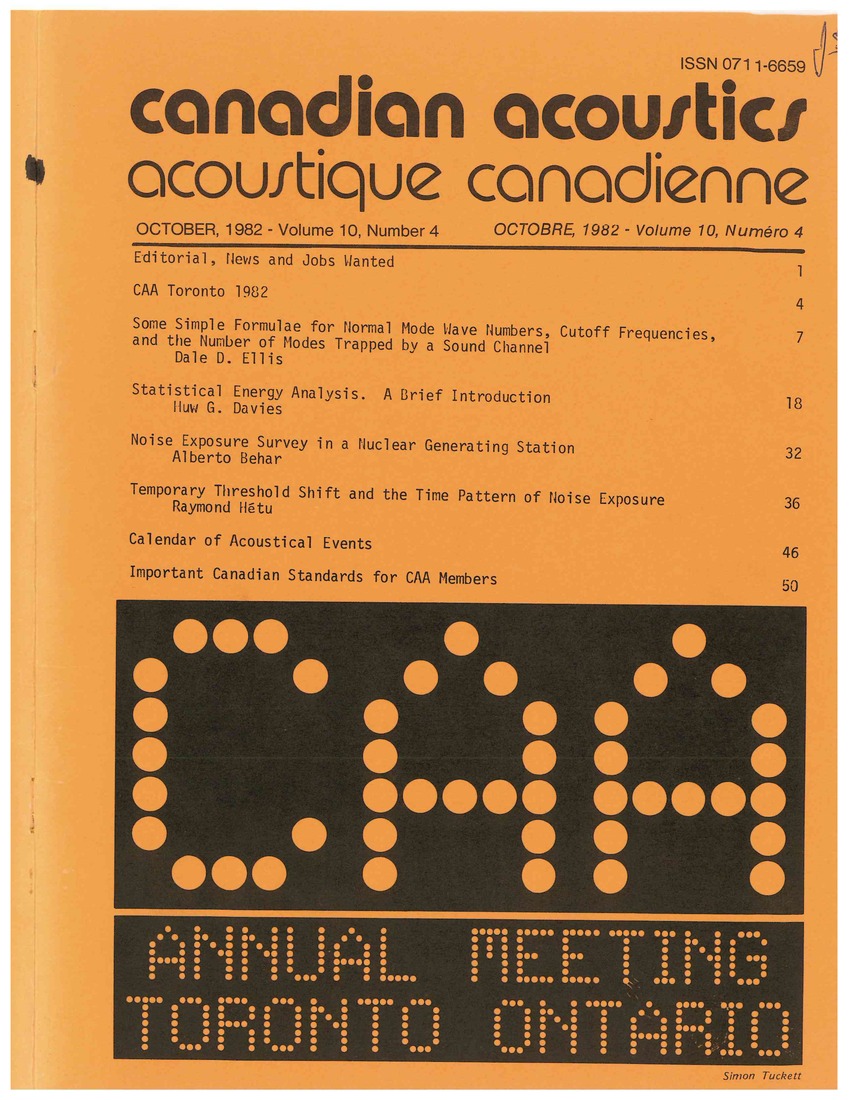Some simple formulae for normal mode wave numbers, cutoff frequencies, and the number of modes trapped by a sound channel
Keywords:
acoustic wave propagation, numerical methods, underwater sound, WKB calculations, normal mode wave numbers, cutoff frequencies, acoustic propagation, underwater sound channel, trapped modes, WKB method, gross features, sound speed profile shapeAbstract
To a good first approximation, acoustic propagation in an underwater sound channel is dominated by a finite number of trapped modes. However, exact solutions are known for only a few special cases, making it necessary in general to use numerical methods to solve the normal mode equation. But often one is interested only in the gross features, such as the number of modes or cutoff frequencies, and one does not need the detail provided by a complete normal mode calculation. Even if a normal mode wavenumbers can be estimated in advance. In such a case, the WKB method can be used to obtain formulae which, although they are approximate, are given in closed form. Formulae based on exact and WKB solutions are presented for the number of modes trapped in some simple sound channels and for the wave numbers and cutoff frequencies associated with these modes. The number of trapped modes is shown to depend on the gross features of the sound channel, while the distribution of modal wave numbers depends to a greater degree on the details of the sound speed profile shapeAdditional Files
Published
How to Cite
Issue
Section
License
Author Licensing Addendum
This Licensing Addendum ("Addendum") is entered into between the undersigned Author(s) and Canadian Acoustics journal published by the Canadian Acoustical Association (hereinafter referred to as the "Publisher"). The Author(s) and the Publisher agree as follows:
-
Retained Rights: The Author(s) retain(s) the following rights:
- The right to reproduce, distribute, and publicly display the Work on the Author's personal website or the website of the Author's institution.
- The right to use the Work in the Author's teaching activities and presentations.
- The right to include the Work in a compilation for the Author's personal use, not for sale.
-
Grant of License: The Author(s) grant(s) to the Publisher a worldwide exclusive license to publish, reproduce, distribute, and display the Work in Canadian Acoustics and any other formats and media deemed appropriate by the Publisher.
-
Attribution: The Publisher agrees to include proper attribution to the Author(s) in all publications and reproductions of the Work.
-
No Conflict: This Addendum is intended to be in harmony with, and not in conflict with, the terms and conditions of the original agreement entered into between the Author(s) and the Publisher.
-
Copyright Clause: Copyright on articles is held by the Author(s). The corresponding Author has the right to grant on behalf of all Authors and does grant on behalf of all Authors, a worldwide exclusive license to the Publisher and its licensees in perpetuity, in all forms, formats, and media (whether known now or created in the future), including but not limited to the rights to publish, reproduce, distribute, display, store, translate, create adaptations, reprints, include within collections, and create summaries, extracts, and/or abstracts of the Contribution.


